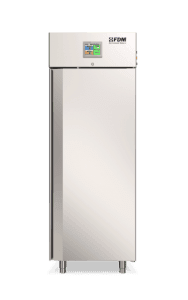
Among the most common tests that can be performed in a climatic chamber, we find thermal cycling.
In the following article, we will illustrate the generalities of thermal cycles and thermal cycling chambers, with some examples taken from the international standard that regulates tests on products and materials.
What is Thermal Cycling
A thermal cycle is defined as any recursive thermal test in which the temperature is regularly altered, touching a high-temperature peak and a low-temperature peak.
A single thermal cycle is considered complete when the temperature returns to the starting values
Thermal cycles differ from thermal shock tests due to the transfer time from the hot environment to the cold environment. The so-called "dwell time" of the sample in a thermal cycle is at least ten minutes and the extreme of the new temperature zone must be reached within 15 minutes.
Instead, in the so-called thermal shock test, a few seconds must pass in the transfer of the sample from one environment to another to obtain the "shock" factor. The shock is in fact caused by the so-called "heating and cooling rate", which differentiates it from standard thermal tests.
Perform
Climate Stress
Discover the new series of Climate Chambers for controlled climate testing
The Thermal Cycling Chambers
Although the timing of the transfers and the accuracy of the temperature values
All standard climatic chambers are therefore also thermal cycling chambers.
Most thermal cycling chambers can be programmed to cycle independently.
The International Procedures for Thermal Cycles
There is no single international procedure for terminating cycles.
The thermal cycle in a climatic chamber is such a common environmental test that it is necessary on many types of products and materials. Among the sectors most involved, there are electronics in which we can mention the MIL-STD-883E standard but also the corrosion tests on metals include thermal cycles as shown in ISO 13573: 2012.
These procedures are very specific and prescribe:
- the temperature of the extreme cold of the cycle
- the temperature of the extreme heat of the cycle
- the maximum length of transfer time
- the minimum duration of the settling time
- the minimum number of thermal cycles required
For more precise information, it is necessary to find the technical documentation concerning the sector and the materials we have to test.
You cannot find the ideal chamber for your test?
Create your own environment, according to any test requirement
The FDM Thermal Cycling Chambers.
The FDM climatic chambers are the ideal tools to carry out most of the thermal cycles for tests on materials.
If the values
Both the climatic chambers and the FDM environmental chambers implement the best technologies and can program the thermal cycles independently thanks to the innovative revoFACE interface.
For further needs, please do not hesitate to contact us.
Would you like to receive a quote or do you have questions about the product?
Contact us to receive more information about this Product.



